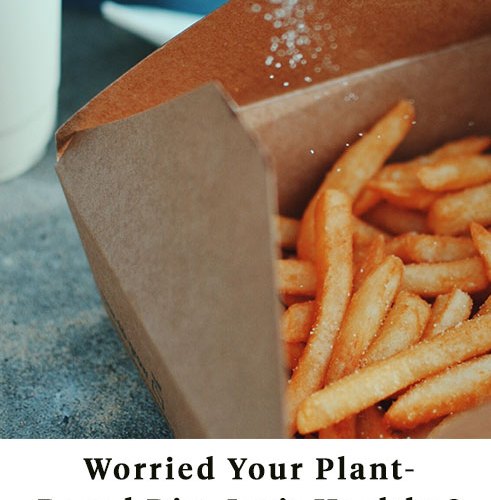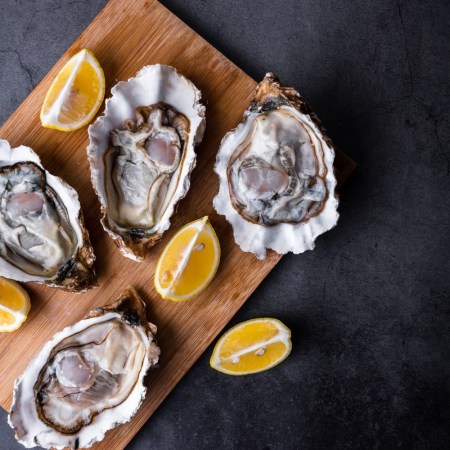In theory, switching to a plant-based diet can reduce your risk of cancer, diabetes, Alzheimer’s and heart disease, trim your waistline, boost athletic performance, sharpen your day-to-day focus, increase your libido and improve your sleep. But if you’re eating Captain Crunch for breakfast, French fries for lunch and an extra large cheese pizza for dinner — which qualifies as a perfectly meatless day, according to The Vegetarian Society — those benefits become pure fantasy.
The Earth Day Network recently published a study alongside the Yale Program on Climate Change Communication which found that 51% of Americans are interested in eating more plant-based foods, but feel they need more information on the topic before diving in.
Dietary upheaval is increasingly common these days. Big Meat’s role in deforestation (and the resulting devastating wildfires in the Amazon and Australia) throughout the globe has not gone unnoticed, plant-based meats from brands like Impossible and Beyond have firmly hit the mainstream, and documentaries like Game Changers have detailed the secret Olympians have known for a while now: 86-ing meat from your diet does wonders for energy levels and heart health.
But no matter the reason for making a change (for me, it’s a combination of all three), it’s imperative that the passion that compels your decision is coupled with ration, reason and research. For those who were reared on a merry-go-round of tasty meats, cutting them out can lead to satisfaction-searching elsewhere. Since I dropped meat last year, there have been weekend when I’ve binged on cookies, cakes, pizza, French fries and ice cream, yet gone to bed Sunday night patting myself on the back, thinking, Well done, still safe. When the main goal in the realm of eating is to avoid meat, excessive consumption of butter, cheese and sugar feels reasonable, if even a little expected.
This line of thinking is problematic, though, and according to some research, ultimately more unhealthy than just sticking with meat in the first place. According to a study headed by Dr. Ambika Satija of the Department of Nutrition at the Harvard T.H. Chan School of Public Health, an unhealthful plant-based diet centered around fruit juices, refined grains (white bread, etc.) and potatoes had an increased risk of heart disease relative to a plant-based diet that reduced, but still included, samplings of chicken, beef, pork and turkey. Satija analyzed diets from 209,000 adults over 20 years, and the findings were clear: a full plant-based diet (vegetarianism, veganism) is only effective when meat is replaced with whole food alternatives.
Related: All the Different “Alternative” Meats You Can Throw on Your Grill, Explained
To that end, we’ve compiled a few tips and takeaways to consider before switching to a plant-based diet. While this advice assumes you’re quitting or have quit meat, it’s equally inclusive for pescatarians, and the new, growing sect of “flexatarians” — those who are simply looking to cut back on meat, and may pick a meal or day of week when they abstain. Importantly: all the above are examples of plant-based diets. But all can also turn into junk-food diets, or resemble a practice known as “rookie vegetarianism.”
Below, some knowledge on making the whole no-more-steak thing actually worth it.
WFPB
An overarching rule to a healthy plant-based diet? Make certain it’s a “whole-foods, plant-based diet.” No, that doesn’t refer to the Amazon-owned grocery chain. A WFPB diet prioritizes minimally processed foods that don’t rely on thickeners or preservatives to lengthen shelf life, enhance taste or hack expected “mouthfeel.” It limits or completely eschews animal products. It emphasizes organic options in particular, and food from local farms. It is firmly anti-Wonder Bread.
Two of the world’s most respected diets — the Mediterranean diet, the Japanese diet, both of which exist in “Blue Zones” where people have a longer life expectancy — are examples of WFPB diets. Adherence to a diet that’s high in fiber and low in refined sugar takes some getting used to. It will make your first few trips to grocery store an exercise in agony, but eating real food (starchy vegetables, whole grains, healthy fats) will actually stave off hunger in the short run and bolster your heart health in the long run.
Your next trip
For your next grocery-store run or meal out, try to incorporate the following foods into your meal:
Nuts: Your best friend. I eat about 75 almonds every morning around 10:30. It’s a lot of work for the teeth, admittedly, but they’re a surefire way to keep me from slopping salted butter on an everything bagel every single morning. Diets rich in tree nuts like almonds, pistachios, walnuts, cashews and Macadamia nuts help reduce cholesterol and stabilize the metabolism, while bringing in healthy fats and fiber.
Fruits and Vegetables: Fun fact, the World Health Organization’s recommended sugar intake does not include sugars consumed from fruit. Fruits bring in tasty energy, but are also packed with fiber, vitamins and minerals. Vegetables, meanwhile are just about the best thing you can put in your body. Making veggies the focal point of a meal and fruit the focal point of dessert is a perfect way keep a plant-based diet clean and reap all sorts of random, magical side effects, like preventing your risk of Alzheimer’s.
Whole grains: Brown rice. Rolled oats. Quinoa. Farro. You get it. Eating grains faithfully to their natural state is the core of this whole exercise.
Others: Look for legumes (chickpeas, black beans), nut butters, seeds (flax, pumpkin, chia), tofu, alternative milks … Remember, you didn’t just choose this diet to get rid of something — part of the deal is discovering new stuff that you might love. There will be dishes and sides that you don’t like, too, but that’s okay. The price will be a bad taste in your mouth for a few minutes, instead of a bad feeling in your stomach for a few hours.
Related: What’s the Healthiest Alternative Milk?
Know your faux
Be wary of the plant-based meat craze. I’ll gladly go on the record here: I find some of the new fake meats delicious. There’s a packet of frozen crispy tenders Gardein makes that I’ll douse in hot sauce to make unbelievable boneless buffalo tenders. My go-to Mexican meal, meanwhile, is a burrito from Dos Toros with Impossible beef. As someone who no longer eats meat, these available “experiences” simulate the old feeling enough that when I’m really craving it again, I can scratch the itch and move on.
That said, while I usually go to eye-roll mode the second a meat-eater starts questioning how healthy faux-meats are, they do have a point. The reason they’re so tasty is thanks to the super-sized sodium levels. I mean, look no further than their biggest partnerships, and the reputations those partners have for selling “healthy” food: Impossible inked deals with Burger King and Qdoba, while Beyond works with Subway and KFC.
Meatless meats don’t carry the cancer risks of red meat, but they’re laden with empty calories and can pack four times as much salt as standard ground beef. They’re also high in saturated fat. You’ll get some nutritional value from the blends (black bean burgers have zinc and iron), but at the end of the day it’s not a healthy choice. It carries the plant-based diet tag — really, a plant-based burger might as well be the movement’s mascot — but it has little to do with the natural, real-food-focused verve of the WFPB diet.
In order to mix all the advice detailed above, we recommend looking into meatless meats made from whole foods. In other words, the Holy Grail. Brands like the Finnish Gold & Green or Chicago’s Upton’s Naturals both make vegan meats that use ingredients you can actually pronounce without skimping on taste.
Whether you’re looking to get into shape, or just get out of a funk, The Charge has got you covered. Sign up for our new wellness newsletter today.


















